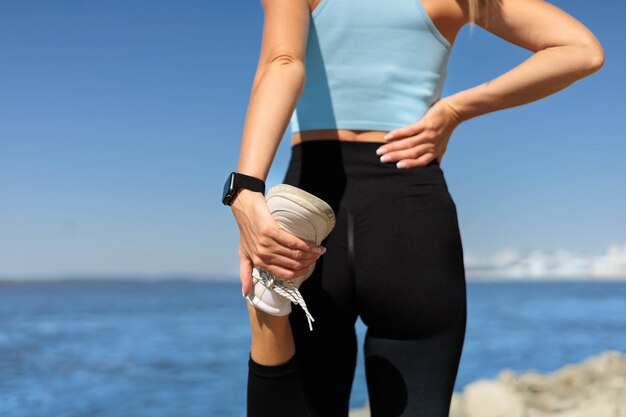Protecting Your Bones: Practical Steps to Reduce the Risk of Osteoporosis
Strong, resilient bones are vital for an active, healthy life, yet as we age, a condition known as osteoporosis can silently creep in, making bones weak and more susceptible to fractures. The good news is that there are many ways to minimize the risk of osteoporosis and maintain healthy bones. This guide provides actionable insights into dietary choices, lifestyle habits, and other key tips to help keep your bones in optimal condition.
Understanding Osteoporosis
Osteoporosis, often called the "silent disease," is characterized by a decrease in bone density and quality, which leads to increased fragility and fracture risk. It's a common condition in older adults but can affect younger people too. Understanding its causes is crucial in preventing it.
The Role of Bone Density
Bone density is a measure of the amount of bone mineral in bone tissue. As we age, bone mass typically decreases. For women, the decline in estrogen levels during menopause can accelerate this process, leading to osteoporosis.
Common Risk Factors
Several factors can increase the risk of developing osteoporosis, including:
- Age: Bone mass decreases naturally with age.
- Gender: Women are at higher risk, especially post-menopause.
- Family history: A family history of osteoporosis can predispose one to the condition.
- Body size: Small, thin individuals may have less bone mass to draw from as they age.
Nutritional Strategies for Bone Health
What you eat plays a foundational role in maintaining strong bones. Focus on incorporating a bone-friendly diet as your first line of defense against osteoporosis.
Calcium: The Building Block of Bones
Calcium is crucial for healthy bones. Adults generally require about 1,000 mg per day, with women over 50 and men over 70 needing about 1,200 mg. Here are some calcium-rich foods to consider:
- Dairy products: Milk, cheese, and yogurt are excellent sources.
- Green leafy vegetables: Spinach, kale, and collard greens pack a calcium punch.
- Fortified foods: Some cereals, juices, and plant milks are fortified with calcium.
Vitamin D: The Calcium Companion
Vitamin D helps your body absorb calcium efficiently. Sun exposure is a natural source, but diet and supplementation can also contribute. Consider foods like fatty fish, egg yolks, and fortified products. Aim for at least 600 IU of vitamin D per day, increasing to 800 IU after age 70.
Other Essential Nutrients
Apart from calcium and vitamin D, other nutrients are important for bone health:
- Magnesium: Found in nuts, whole grains, and leafy greens, magnesium helps regulate calcium.
- Vitamin K: This nutrient, found in broccoli and Brussels sprouts, helps bind calcium to bones.
- Protein: Ensures the building and repair of bone tissues. Good sources include lean meats, legumes, and dairy.
Lifestyle Habits that Foster Strong Bones
Maintaining a healthy lifestyle is just as important as your diet in preventing osteoporosis.
Regular Exercise: Strengthen from Within
Physical activity, particularly weight-bearing and muscle-strengthening exercises, promotes bone health. Aim for:
- Weight-bearing exercises: Activities like walking, jogging, and dancing strengthen bones.
- Strength training: Incorporates exercises using weights or resistance bands.
- Balance exercises: Yoga and tai chi can improve agility and fall prevention.
Avoid Tobacco and Limit Alcohol
Smoking and excess alcohol consumption can harm your bones. Both can interfere with your body's ability to absorb calcium, increasing fracture risk. It's beneficial to quit smoking and limit alcohol to no more than two drinks a day for men and one for women.
Maintain a Healthy Weight
Being underweight puts you at increased risk for bone loss and fractures, while being overweight exerts pressure on bones and joints. Maintaining a balanced weight through a healthy diet and regular exercise is crucial.
Monitoring and Managing Bone Health
Regular check-ups with healthcare providers can help keep tabs on your bone health, particularly if you're at risk of osteoporosis.
Bone Density Tests
A bone density test is a quick and painless way to assess your bone health. It uses X-rays to measure grams of calcium and other bone minerals packed into a segment of bone, typically in the spine, hip, and wrist.
Identifying Symptoms
Although osteoporosis is often asymptomatic in its early stages, be on the lookout for signs such as back pain, loss of height over time, or a stooped posture, as these may indicate weakened bones.
Discussing Options with Your Doctor
Talk to your healthcare provider about preventive strategies tailored to your personal risk factors. They can guide dietary adjustments, lifestyle changes, and medical interventions if needed.
Empowering Your Bone Health Journey
Keeping bones healthy is a lifelong endeavor that begins at an early age and continues into your later years. By embracing nutritional, lifestyle, and monitoring strategies, you can substantially reduce the risk of developing osteoporosis.
Key Takeaways for Stronger Bones 🦴✨
- Calcium & Vitamin D: Essential for bone health. Incorporate dairy, green vegetables, and fortified foods.
- Exercise Regularly: Aim for weight-bearing, strength, and balance exercises.
- Avoid Harmful Habits: Quit smoking and limit alcohol consumption.
- Stay Active and Monitor: Regular bone density tests and discussions with your doctor can keep you informed.
By following these tips and being proactive about your bone health, you can stand strong against osteoporosis, ensuring longevity and quality of life. 🌟💪

Related Articles
- a Nurse Is Caring For a Client Who Has Osteoporosis.
- a Percutaneous Is Performed To Treat Osteoporosis Related Compression Fractures
- Can Alcohol Cause Osteoporosis
- Can I Do Pilates If I Have Osteoporosis
- Can I Reverse Osteoporosis
- Can Men Get Osteoporosis
- Can Osteoporosis Affect Teeth
- Can Osteoporosis Be Cured
- Can Osteoporosis Be Painful
- Can Osteoporosis Be Reversed